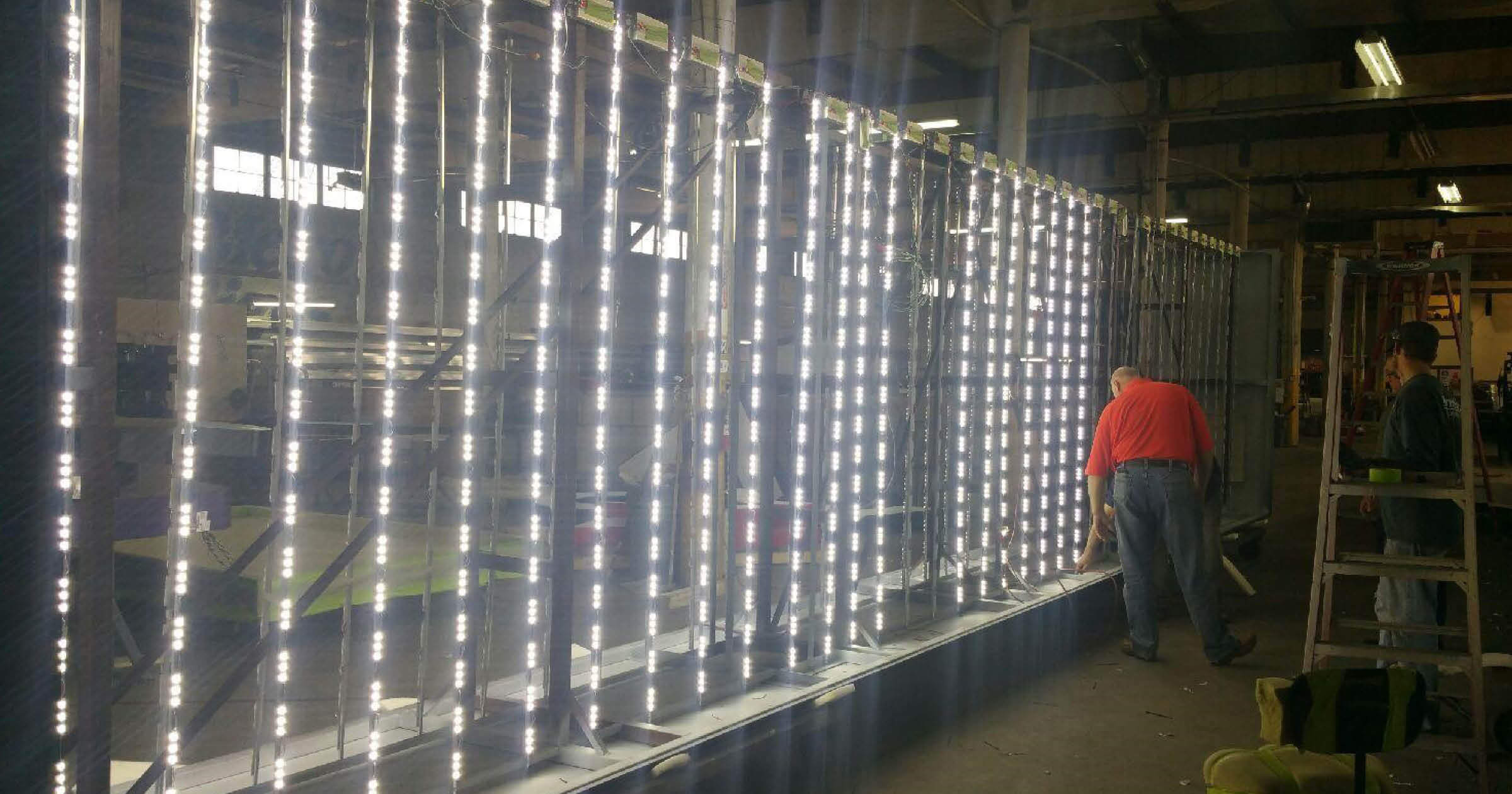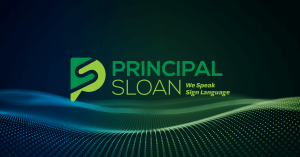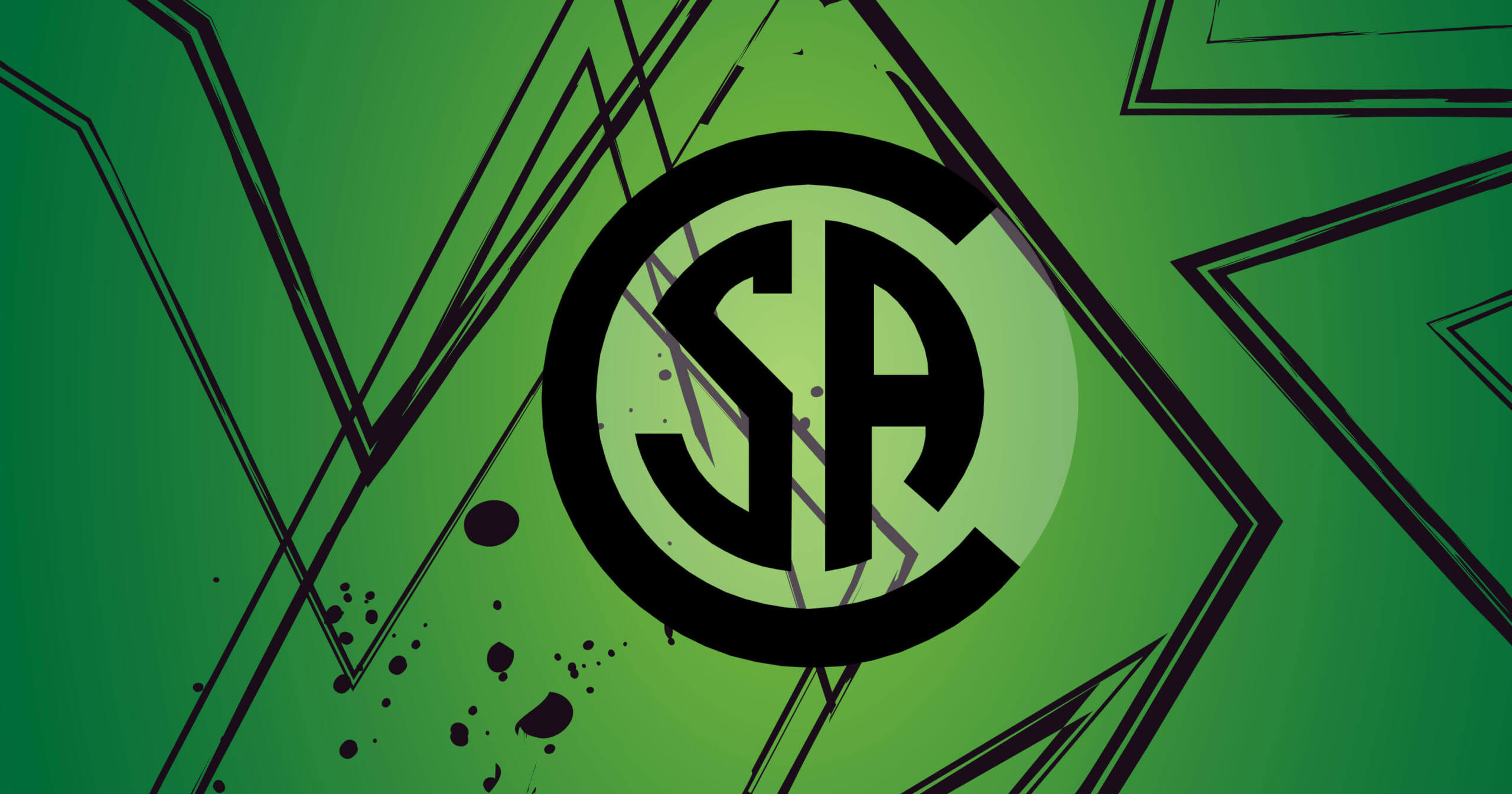As I sat down to write this article (just after Christmas) I realized that just like the holiday season, this topic was not going to be information starvation but information indigestion. There are more LED systems and retrofit application opportunities than ever, so I have tried to break LED products down to two basic types—modules and systems. Both have their benefits and uses in LED retrofits and there are few simple things you can do up front for either type to make sure your next LED sign retrofit is a success.
Retrofit Modules
For a number of years, sign manufacturers have been retrofitting primarily neon with LED lighting and LED systems have been predominately one flavor—modules. These are basically LED modules with wire in between that peel and stick to the back of a channel letter can. Yes, they come in different sizes, output, module spacing, and beam angles—but basically they all operate on the same platform.
Most channel letter LED modules are 12VDC, run similar footages and have similar outputs. LED modules are well understood by most sign makers and offer the most flexibility in that they are a component that can be easily cut, spliced, and placed in a sign. There is even software available (https://www.signwizard.com/) that allows you to choose the module from your favorite manufacturer and it will provide you with a module count and recommended spacing.
Retrofit Systems
More recently—and with a new focus on fluorescent cabinet retrofits—LED manufacturers have developed systems that are ready to install or can be fabricated and assembled in advance in order to minimize installation time and cater to shops that are more service oriented.
When it comes to fluorescent retrofits, a couple of companies (Permlight and Principal LED) have released products that are designed to fit into existing fluorescent T-12 sockets.
Allanson’s LED Slide and the Ventex Snap Stick are both custom extrusions that are designed to slide in the same LED modules that are used for channel letters. This has the advantage of matching color and output of the LED in a cabinet sign with the same modules in a set of channel letters.
Companies like GE (Power Strip) and US LED (Tandem Series) have developed hybrid systems that use an extrusion or rail system that incorporate specifically designed LED modules. The US LED Tandem2 system uses a unique interlocking rail design with a patented quick-connect system that works with both single and double-faced cabinets. Bitro Group (Lattice) and SloanLED (Sign Box II) have ladder or grid systems for sign cabinets that are easy to cut, install, and minimize wiring. More recently, both Permight and Principal LED have introduced products ready to install in standard lamp lengths and can be retrofitted using existing T12 lamp sockets.
Energy Savings
One of the major drivers for changing out neon or HO T12 fluorescent lamps to LED is energy savings, which can be anywhere from 40 to 90-plus percent depending upon the application. The second driver is reduction of ongoing maintenance costs. Signs containing T12 fluorescent lamps usually need re-lamping on an annual basis, making maintenance calculations pretty straightforward.
There is no question that well fabricated neon can and will last a very long time, but the reality is that there is a lot of neon out there that isn’t. Conversely, there are a lot of LED systems out there that aren’t necessarily built to last very long either. Whether it’s a neon-to-LED, fluorescent-to-LED, or LED-to-LED retrofit, here are some important considerations before choosing an LED system and some tips for ensuring a successful sign retrofit.
Communicate the ROI
Every customer has different needs, and installation and labor costs vary by region. In years past the return on investment (ROI) for the end user has had limited market penetration for the LED retrofit market.
“Until recently, retrofits have not taken off as many predicted simply because the ROI has not been there,” says Bob Magnus, executive VP of sales and marketing for Ventex Technology Inc. “However, as systems have become easier to install, last longer, cost less, and bring added benefits—like remote mounting power supplies to reduce future service costs—that ROI has become very real. Throw in the energy company rebated dollars now available in many parts of the country, and ‘retrofit, don’t repair’ is starting to make a whole lot of sense.”
Many LED companies now have online energy savings calculators based on energy rates and hours of use. Sign companies can provide an installation cost to perform the retrofit. The harder items to estimate are projected maintenance savings. This involves working with the customer to understand the location, historic repair costs and knowing industry averages. Many LED companies are willing to help put together a more detailed analysis that incorporates all the factors that get to an actual ROI that the sign company can present to their customer.
Make sure the LED system performance meets the customer’s ROI needs. Offering a five-year warranty and the LED system actually lasting that long are sometimes two different matters altogether. My experience is that most LED service calls in the first couple of years are often due to power supply issues.
Power Supplies and Warranties
“We are looking at an expanded retrofit landscape now, with neon-to-LED, fluorescent-to-LED and even LED-to-LED retrofits taking place every day,” says Magnus. “One of the hottest-selling features that our clients are implementing today is moving the power supplies out of the signs. The Ventex system allows our power supplies to be installed, using 18 AWG wire, up to 175′ from the sign, in more convenient, sensible locations. We call this ‘bike and a backpack’ serviceability. No heavy equipment to rent, no more multiple-man crews. This not only reduces the cost of future repairs, it increases power supply life by moving them away from the heat in the cabinet and minimizes sign face damage from repeated repairs.”
It is important to get service history on the power supplies from the manufacturer and seek out the experiences of other companies that have used the system. It is also important to get performance data on the actual LED system (not just the LED chip) from the manufacturer. I have heard manufacturers say, “I get my LEDs from company X.” This may be a perfectly reliable LED; however, it is the entire module that indicates performance, not just the LED itself.
About a year and a half ago, I saw an LED retrofit taking place on my way to work and the faces were off of the sign. There were white LEDs on the top cabinet and red LEDs on the bottom set of channel letters. The red LEDs incorporated 5mm type lamps. Last week I drove by the same location and a big portion of the red LEDs were already out. This LED provider provides a five-year product warranty.
My point is that the cost of replacing the $50 worth of LEDs—which the manufacturer may be happy to do—is irrelevant because the ROI went out the window due to the $750 service call to perform the repair. A great way to hedge against this is to use LED systems that provide an additional labor warranty. “We really try and communicate the value of the two-year labor warranty we offer with our Fusion LED systems. We see it as a sales tool for our customers to share with end users when trying to sell a sign retrofit,” says Kevin Noland, Inside Sales Manager, Principal LED.
Minimize Installation Costs
Choose a system that minimizes installation costs. Again, a major driver in ROI is the time that it takes to perform the retrofit, especially in signs that are in high and/or difficult-to-service areas. For those jobs, try and do most of the assembly up front. For example, prefabricating a false back and placing and testing the LEDs in the shop is often easier than peeling, sticking, and siliconing hundreds of modules into an existing sign on site—especially for sign cabinets.
When it comes to fluorescent retrofits, a couple of companies (Permlight and Principal LED) have released products that are designed to fit into existing fluorescent T-12 sockets. They are available in standard lamp lengths and can reduce the time it takes to retrofit fluorescent sign cabinets. It is also easy for installers to grasp, because it is similar to what they already do on existing service calls.
“The Principal LED Qwik Stik system is a winner for us,” says James Hubbell, owner of Constant Illumination, Rockford, Ill. “With the ability to have a direct substitute that fits into T12 sockets at existing spacing, we are finally at the point that we can comfortably upsell to LED for service calls on the fly.”
Whichever product you choose, make sure you are familiar with it and that you understand the total cost to build and install the LED system. Survey the site in advance to make sure there are no obstructions that could delay or prevent installation.
Ordinances and Rebates
Know about local ordinances (and local rebates). Many municipalities have a range of ordinances, even for retrofits. Underwriters Laboratories (UL) has a category that allows the use of LED product kits or systems that have been specifically investigated and certified by UL for field installation in signs (https://www.ul.com/). This is an effective alternative to having to do a costly and time-consuming field evaluation. Check with your LED provider to make sure their system is UL-classified as required by local ordinances.
Finally, look out for and know about local rebates. “It may take some effort, but in the end, you can’t turn down free money,” says Magnus. “Eventually, your clients will be retrofitting their signs. The service company with the best retrofit solution—including taking advantage of energy company rebates—will get the work. Leaving rebate money on the table is not only doing a disservice to your client, it will cost you the job. The people we are working with now who are taking advantage of rebates that can cover as much as 70 percent of the cost of the job, are winning jobs and maximizing their profits. When you don’t have to pinch every penny to complete a job, both you and your client will be happier with the results.”
Measure Twice
Well I guess my dad was right—measure twice and cut once. Doing a little up front work will allow you to communicate the ROI to your customer, make sure you choose the right product, and ensure that the job goes smoothly and the customer gets the best performance and value you can offer. This is a good formula for a productive and profitable LED retrofit.
This article was published by Sign & Digital Graphics Magazine on January 28, 2014.



